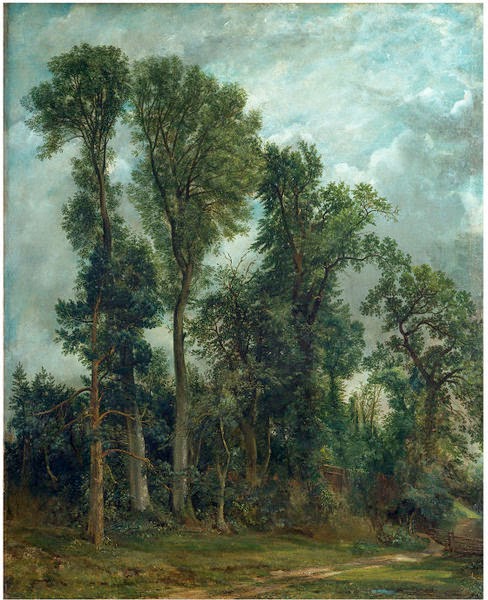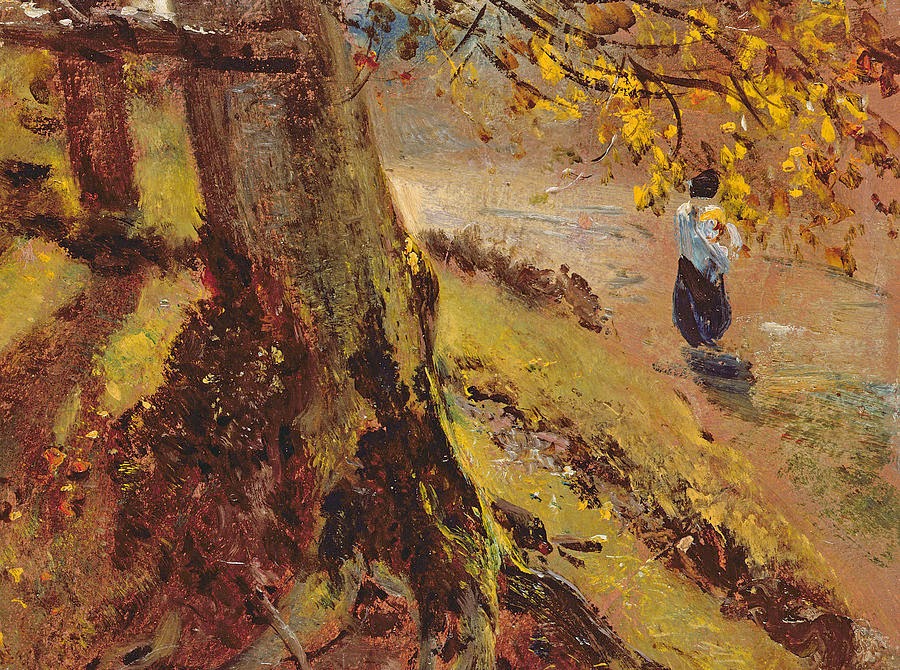As a successful, economically well-off and respected master at this last stage of his life, Turner after sixty was doing pretty much whatever the hell he wanted: traveling like a maniac, filling notebook after notebook of sketches and ideas, experimenting with a new blue here, a new format there, a new subject everywhere, cavorting with a Mrs Booth in Margate and getting offered money by patrons and disparaging remarks from the queen in equal parts. I only wish to have an older age like he did. Then again, he had a very early start in the path to success -he was a bit of a prodigy actually- and becoming Britain's painter par excellence.
 |
| Oh, you sketch too? That's cute. Some of Turner's notebooks. |
 |
| "Blue Rigi, Sunset" watercolor |
Most students of the master point out how Turner wanted to immerse himself in nature and optics and understand light and storms to the point of tying himself to a boat's mast to experience a gale from inside... That sounds like those weathermen on TV that just have to report while being wet and pummeled by hurricanes to "show" us how it really is. I think that story might be an exaggeration but I haven't read on it. yes, he probably had a keen interest in natural phenomena but he was no scientist. Like with Leonardo da Vinci and many others, people insist in ascribing "scientific" interests to Turner and what are nothing but his very poetic observations.
BTW: I've often rejected the idea of Leonardo as scientist. Opening a corpse or studying the flight of birds, engineering complex (and failed) machines and advancing theories about the presence of sea shells on mountains or tides being the result of the Earth breathing demonstrate an open poetic mind, an observant mind, not a disciplined scientific approach. No matter how much of a prerequisite an open mind might be to be a scientist, both Turner and Leo would flunk the maths test.
 |
| Unless the weatherman is wet, nothing is really happening. |
To me, Turner was a concept artist. He painted mostly imaginary things and titled them in ways that would make a Hollywood executive run for cover. The titles sound long and over-budget: "The fleet departs, the queen of Sheba and her monkey say farewell to a thousand eunuchs." (I made that one up) or more down to earth: "Crew of a Whaling ship burns blubber to extricate themselves from the polar ice". He was re-creating events that suited his imagination, not trying to render those events accurately. He did several paintings of the burning of the Houses of Lords and Commons for example. They are all dramatic and glow beautifully but their excess is what triggers the awe caused by the magnitude of the real thing, not their accuracy.
 |
| Burning of the houses of Parliament. 1835 |
He had a keen eye for accuracy nevertheless. Turner could do detail and paint a cathedral with the precision of a surveyor if he wanted to. But he was a painter's painter. His main focus besides selling prints seems to have been the potential of paint to create the moods and light present in nature, by itself and with but a fleeting suggestion of the actual scenery. On a side note, some people say that the pervasive yellow atmosphere of his paintings was prompted by ash in the air from a volcanic eruption. Can't blame varnish for that one apparently.
 |
| This is a sketch from a younger Turner, he could do detail. |
| A watercolor of a dangerously dangling bridge in the Alps. |
| Add caption |
When it comes to full-fledged oil paintings, Turner seems to have continued the experimenting. His paintings are often painted and repainted, almost as in a continuous state of flux. Sometimes decades pass between re-paints.
Talking about flux, the sea had a great appeal to the artist and I think his whaling pictures were my biggest revelation personally because they suggest so much without really nailing anything down. One could say they are "abstract" except what they are trying to convey is still atmospheric and narrative. In that vein, I do love the "Sunrise with sea monsters" I post below. There's really nothing but those lurking eyes and grotesque shapes.
Let's mention here two knock-outs like "Burial at Sea" and the acclaimed favorite of his: "Fighting Temeraire".
A subject that comes up very often is the modernism of Turner. Rob Adams wrote a beautiful article about it here. Like him, I am more ambivalent than critics on this matter.
Turner was in fact a modern painter very much in touch with progress. He didn't shy away from new pigments or techniques (there are some examples of a particular chemical blue pigment in the show). He depicted a new world coming full speed ahead from behind the fogs/smogs of the Industrial Revolution. Current events like the aforementioned Parliament burning interested him. So did other subjects like slavery and the power and the threat/thrill of steam power and industrialization. But Turner is firmly planted in Romanticism, that period in which all art forms dissolved in a rapture of movement and emotion, sometimes dark. His art is not abstract for the sake of abstraction, he is always referencing something no matter how diffuse.
-This idea of dissolution, by the way, is beautifully embodied by a building like the late Crystal Palace, an environment within a bubble of cast iron and glass, it's interior blending with the outside by protective but transparent walls. Like that building, Turner's paintings might be "open" but still refer to a narration, a representation of something more specific than a mood. He very rarely leaves a painting unpopulated or untitled, no matter how ghostly the figures or how obtuse the title.
| Arguably his most forward looking and famous piece "Rain, Steam and Speed, The Great Western Railway" |
Turner was a great painter and a pioneer. To insist in his modernity reveals a very linear vision of Western art where all movements feed but "overtake" the previous ones. Besides where technical advances create change, most art movements have a more pendular swing to them. Like all masters, Turner possesses permanent qualities as valid today as when he painted his last works. Whether this qualities pioneer, foresee or introduce the future, is but a minimal aspect of their appeal in my opinion.



















